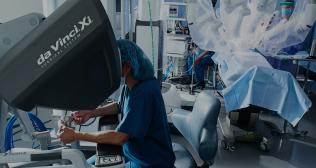
Single Incision Laparoscopic Surgery (SILS) for Hernia Repair
Single-Incision Laparoscopic Surgery (SILS) is an innovative technique used for hernia repair that offers several potential advantages over traditional approaches. This blog explores the benefits and considerations of SILS for hernia repair, highlighting its potential impact on patient outcomes.
An overview of SILS as a minimally invasive surgical technique that involves making a single incision through which instruments are inserted to repair the hernia.
Advantages of Single-Incision Laparoscopic Surgery (SILS) for Hernia Repair:
1. Reduced scarring: SILS uses a single small incision, resulting in a smaller scar compared to traditional multi-port laparoscopic surgery
2. Potentially faster recovery: SILS may lead to reduced postoperative pain and faster recovery times compared to open surgery
3. Improved cosmetic outcome: The single incision is typically made in a concealed location, resulting in a more aesthetically pleasing result.
4. Potential for reduced complications: SILS may lower the risk of complications such as infection and hernia recurrence.
Patient Recovery and Follow-up Care:
Postoperative care and recovery process after SILS hernia repair, including pain management, wound care, and activity restrictions.
The importance of follow-up appointments with the surgeon to monitor healing and address any concerns.
Single-Incision Laparoscopic Surgery (SILS) for hernia repair is an innovative surgical approach that offers potential benefits such as reduced scarring, faster recovery, and improved cosmetic outcomes. However, it requires specialized surgical expertise and careful patient selection. Discussing the suitability of SILS with a qualified surgeon is essential to determine the best treatment approach for each individual case.
Categories
Clear allMeet the doctor

- General Surgery | General Surgery
-
20 Years
-
1100



















